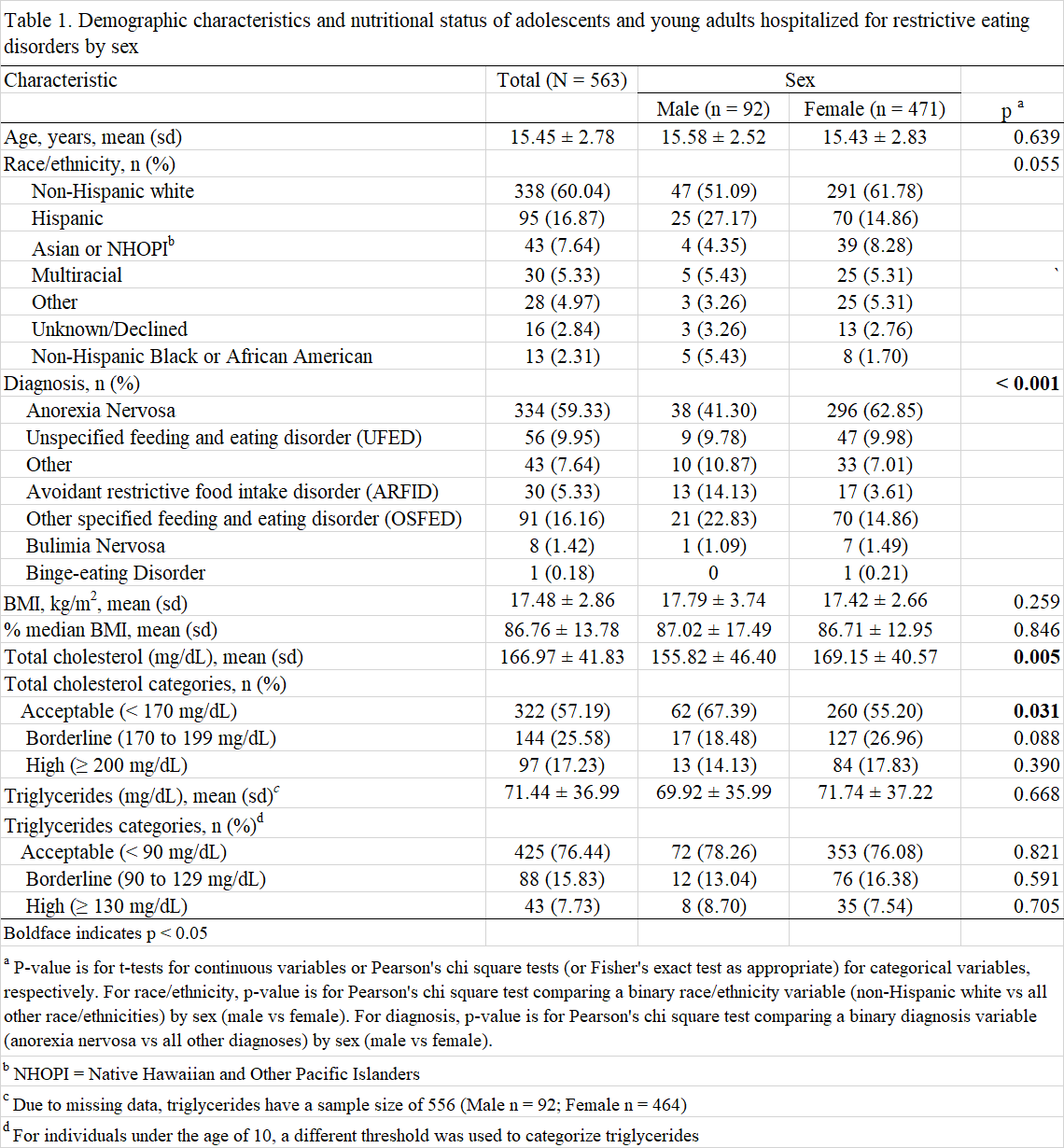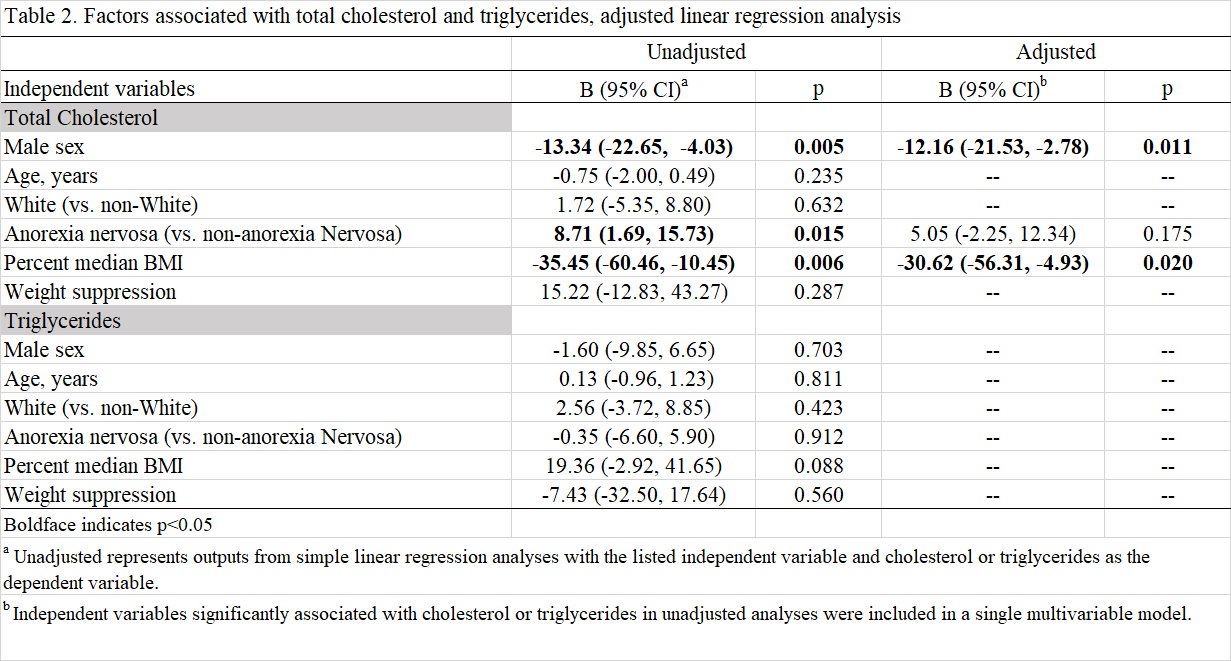Adolescent Medicine: Disordered Eating
Adolescent Medicine 3
516 - Sex Differences in Cholesterol and Triglyceride Levels Among Hospitalized Adolescents and Young Adults with Eating Disorders
Sunday, April 30, 2023
3:30 PM - 6:00 PM ET
Poster Number: 516
Publication Number: 516.3
Publication Number: 516.3
Anita Chaphekar, University of California, San Francisco, School of Medicine, San Francisco, CA, United States; Anthony Nguyen, University of California, San Francisco, School of Medicine, San Francisco, CA, United States; Ruben Vargas, University of California, Berkeley School of Public Health, Berkeley, CA, United States; Amanda E.. Downey, University of California, San Francisco, School of Medicine, San Francisco, CA, United States; Sara M. Buckelew, UCSF, San Francisco, CA, United States; Andrea K. Garber, UCSF, San Francisco, CA, United States; Jason M. Nagata, University of California, San Francisco, School of Medicine, San Francisco, CA, United States
- AC
Anita Chaphekar, DO (she/her/hers)
Clinical Fellow
University of California, San Francisco, School of Medicine
San Francisco, California, United States
Presenting Author(s)
Background: Malnutrition in the setting of eating disorders can lead to numerous medical complications such as abnormal serum lipid levels. Despite malnutrition, elevated cholesterol and triglycerides are hypothesized to result from starvation-induced hepatic and metabolic dysfunction. While prior studies have examined cholesterol and triglyceride abnormalities in patients with eating disorders, no study has examined potential sex differences in these values.
Objective: To determine sex differences in cholesterol and triglyceride levels among adolescents and young adults hospitalized for medical complications of eating disorders.
Design/Methods: A retrospective electronic medical record review of 563 patients aged 9-25 years admitted to the University of California, San Francisco Eating Disorders Program for medical stabilization, between May 2012 and August 2020, was conducted. Cholesterol and triglyceride levels were grouped as ‘Acceptable’, ‘Borderline’, and ‘High’ according to laboratory reference ranges. Pearson’s chi-squared analysis was used to examine unadjusted differences in cholesterol and triglyceride levels by sex. Linear regression analyses were conducted to determine factors associated with total cholesterol and triglyceride levels.
Results: A total of 92 males and 471 females met inclusion criteria (age 15.45 ± 2.78, 59.3% anorexia nervosa; percent median body mass index 86.76% + 13.78). Total cholesterol levels were higher in females compared to males (169 ± 41 vs 156 ± 46 mg/dL, p=0.005). A greater percentage of males had acceptable cholesterol levels compared to females (67 vs 55%, p=0.03); no statistical difference was seen in the percentages of borderline and high cholesterol levels. There were no statistical differences in triglyceride levels between males and females. In linear regression models, male (compared to female) sex was associated with a lower total cholesterol level (B = -12.16, 95% CI -21.5, -2.78). Higher percent median body mass index (B = -30.62, 95% CI -56.31, -4.93) was associated with lower total cholesterol levels, in adjusted models including sex, percentage median body mass index, and diagnosis.
Conclusion(s): Females and patients with more severe malnutrition have higher risk of elevated total cholesterol levels. Clinicians should consider assessing for dyslipidemia in these populations hospitalized for restrictive eating disorders. Future research should investigate possible explanations for these sex differences in cholesterol seen with malnutrition in the setting of eating disorders.


